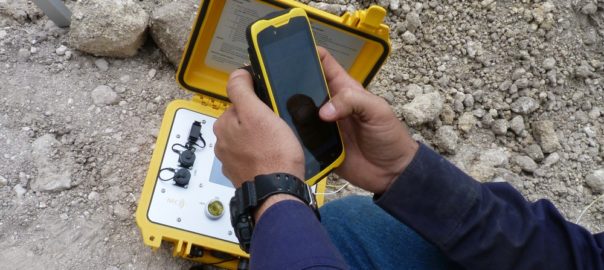Blasting and explosive solutions provider, BME says it is once again pushing the boundaries of safety with its initiation system, this time testing the resistance of its AXXIS Titanium™ electronic delay detonators (EDDs) to high current AC voltages.
“There are a number of different voltages that underground mines employ for their various machinery and equipment,” Tinus Brits, BME’s Global Product Manager – AXXIS™, said. “The tests we carried out with an independent research partner were able to show that the AXXIS Titanium EDD is very resistant to high current AC voltages.”
South Africa’s Department of Minerals Resources ARP1717 certification is relevant to this aspect of blasting, providing a foundation for the safety levels expected from blasting equipment, according to Bennie van Nieuwenhuizen, Quality Manager for AXXIS.
“In line with our innovation focus and our commitment to safety, the tests we conducted were to push the boundaries even further in the interests of safe blasting and mining,” van Nieuwenhuizen said. “We were therefore interested in characterising the response of our detonators at far higher currents and voltages than the standards require.”
The context for these tests is that EDDs are typically deployed in mining environments where the range of energy levels is difficult to predict – as every mine will have their own preferred power supplies. In some mining applications, EDDs are used near electrical wires or electric initiation systems.
Andries Posthumus, AXXIS Product Development Manager, explained: “This gives rise to the risk that the EDDs could be exposed to high voltages and currents due to human error or equipment failure. It is therefore important that EDDs should have resistance to initiation when unintentionally exposed to high voltage and current.”
He highlighted that the AXXIS Titanium EDD consists of an encapsulated electronic module, with an electronic printed circuit board that is over-moulded with a plastic material in a proprietary shape. The area closest to the explosive part of the detonator forms a friction fit, as the detonator tube is tapered to the bottom. This forms a seal mechanism, isolating the electronic components from the pyro-technic head and base charge.
The testing protocol required specialised high-power inputs, so BME partnered with the National Electrical Test Facility, according to BME Electronic Engineer, Hendrik van Niekerk.
“The tests involved a high current AC voltage source consisting of a live node, connected through a resistor to the one wire of the detonator, and the neutral node to the other wire of the detonator,” he said. “A remote contactor was used to start the AC exposure, while we measured the voltage with a high voltage probe and measured the current level with a current probe.”
The test levels were pushed to extreme levels not expected in normal operating conditions and, in all the samples tested, no initiation occurred.
“We were pleased with the results of the tests, which showed that BME continues to operate at the highest levels of safety,” Brits said. “Our innovative approach ensures that our ongoing research and testing finds new opportunities for safe and efficient blasting.”








